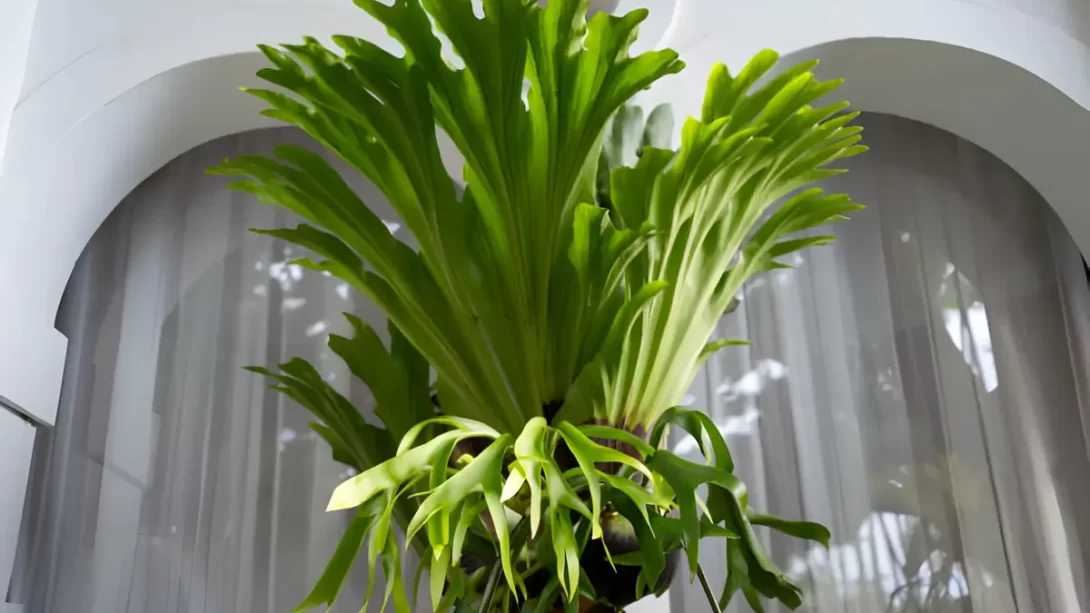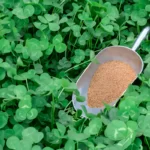Staghorn ferns, belonging to the genus Platycerium, are remarkable for their distinctive, antler-like fronds and unique growing habits. Unlike typical potted plants, staghorns are epiphytes, meaning they grow on other plants or surfaces in nature. This unique lifestyle significantly influences their water requirements. Understanding and meeting these specific needs is crucial for the health and vigor of your staghorn fern.
Staghorn Ferns’ Habitat
Staghorn ferns naturally thrive in tropical and subtropical environments, often clinging to tree trunks or branches. In these habitats, they receive moisture from frequent rain, high humidity, and the air around them. Their roots are adapted to absorb water quickly and efficiently. When caring for these ferns indoors, it’s essential to replicate these conditions to the best of our ability. This involves not only how we water them but also considering their overall environment.
Signs Your Staghorn Fern Needs Water
Recognizing when a staghorn fern needs water is key to preventing both under and over-watering. Signs of dehydration include wilting or curling at the frond tips and a general dull, dry appearance. It’s important to distinguish between the natural shedding of older fronds, which turn brown and die back, and dehydration. Another indicator is the dryness of the fern’s mounting material or soil, which can be checked by touch.
Watering Techniques for Staghorn Ferns
Watering staghorn ferns correctly is vital for their health. The frequency of watering depends on various factors such as the environment’s humidity, air circulation, and the fern’s size. A general rule is to water once a week, but this may vary. When watering, thoroughly soak the root ball and the mounting material. Allow excess water to drain to prevent rot. Between waterings, the fern should partially dry out.
Misting the fern in addition to regular watering can be beneficial, especially in drier environments. Misting provides moisture for the fronds and mimics the fern’s natural humid habitat. However, misting should not replace soaking as the primary watering method.
The Role of Humidity in Staghorn Fern Care
Staghorn ferns thrive in high humidity. In indoor settings, maintaining adequate humidity can be challenging. To increase humidity, use a humidifier near the plant, or place the fern in a naturally humid area like a bathroom. Regular misting also helps. Signs of inadequate humidity include browning frond tips and slowed growth.
Mounting and Soil Considerations
The choice of mounting material can affect how often a staghorn fern needs water. Common materials include wood, cork, and wire baskets filled with sphagnum moss. These materials should retain some moisture but also allow for air circulation and drainage to prevent root rot. If the fern is potted, use a well-draining potting mix designed for epiphytes or orchids.
Long-Term Care and Seasonal Adjustments
As the seasons change, so do the watering needs of your staghorn fern. During the warmer, brighter months of spring and summer, your fern may require more frequent watering as it enters its growth phase. Conversely, in the cooler, darker months of fall and winter, reduce the frequency of watering as the fern’s growth slows down. Always monitor the moisture level of the mounting material or soil and adjust your watering schedule accordingly.
It’s also important to consider the fern’s growth over time. As staghorn ferns mature, their watering needs may increase due to a larger root system and more expansive fronds. Regularly assess the health of your fern and adjust care routines to accommodate its changing needs.
Conclusion
Caring for a staghorn fern is a unique and rewarding experience. These distinctive plants require a bit more attention and understanding compared to typical houseplants, particularly when it comes to their watering needs. Remember, the key to successfully watering staghorn ferns lies in mimicking their natural tropical habitat as closely as possible, considering factors like humidity, the mounting material, and seasonal changes. With regular observation and slight adjustments to your care routine, your staghorn fern can thrive and bring a touch of the tropics to your indoor space. Embrace the unique qualities of your staghorn fern and enjoy the lush, green beauty it adds to your home.



